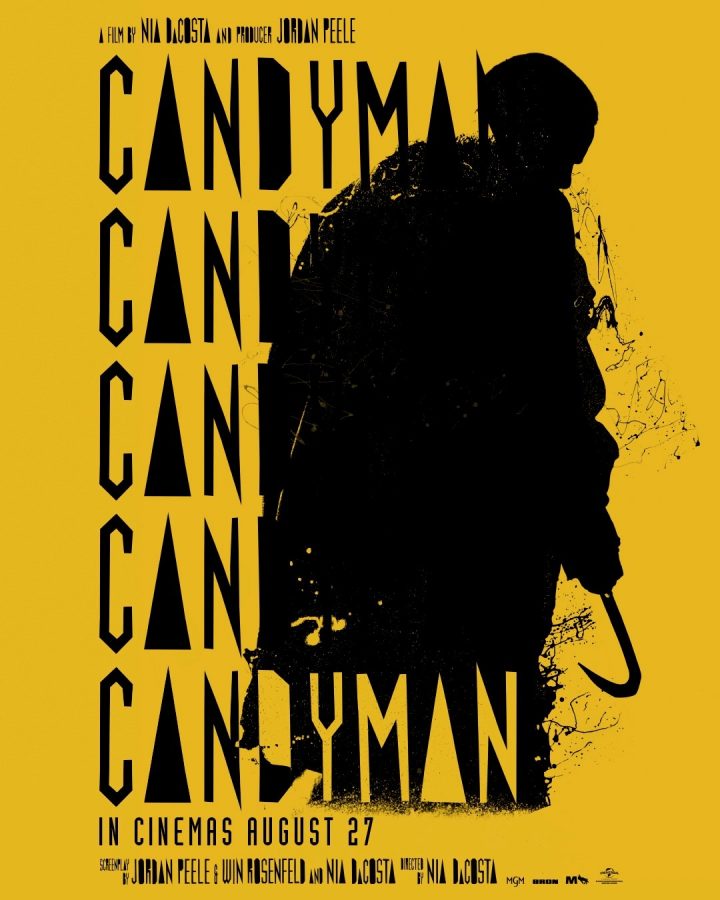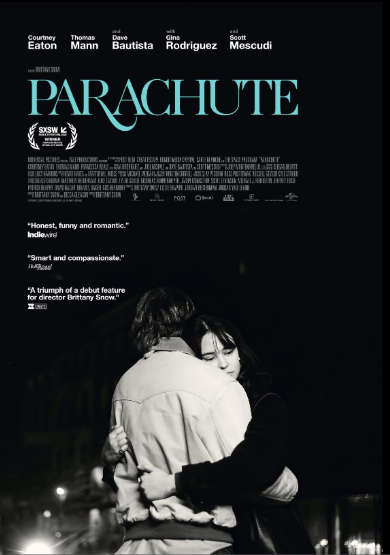Candyman – Artistically Innovative, Wonderfully Terrifying, and Profound
Forewarning, do not read this article aloud in front of your reflection or you will risk summoning a vengeful demon…just kidding.
The box-office hit Candyman, an innovative sequel that combines the relevant issues of racism and police brutality with psychological horror, debuted in August with a twisted yet riveting experience for horror junkies.
Spoilers for Candyman ahead…
After a long season of forgettable horror films released in theaters, excluding A Quiet Place II, Candyman delivers a profound second take of the franchise’s lore, leaving the audience pondering the truth about the infamous phantom: Candyman.
This film follows Anthony McCoy, a lost artist who is suddenly inspired by the chilling tale of Cabrini Green and Candyman. Yet, he mentally snaps as a series of gruesome and puzzling murders unfold, eventually falling into a spiral of death and vengeance.
Visually, Candyman offers an exceptional experience. The clever cinematography contributes to the fear, notably through the use of shadow puppetry and mirrors.
Nia DaCosta, the first Black woman to direct a No. 1 box-office hit horror film, spoke regarding the imagery of the shadow puppets.
“Shadow puppets are much cruder, much more over-the-top. It’s illustrating this isn’t real life and the way we think of real-life,” said DaCosta in an interview for The New York Times. “We also got to tell the story of Candyman without showing that violence. So, it could still be evocative and sad, but we could not create more disturbing imagery of Black people being brutalized by race violence.”
Instead of adding unnecessary gore to the already gruesome film, shadow puppetry acts as a vessel for powerful, metaphoric storytelling, allowing the viewer to focus more on the intent rather than the blood.
Moreover, in every single scene, there is always a mirror or some sort of reflecting image expertly placed to provide a sense of suspense, occasionally showing Candyman lurking right behind the protagonists. It becomes difficult at times to focus on the forefront of the scene as the viewer is intentionally drawn to the mirror, anticipating the murderous demon in the reflection.
Over the course of the film, the audience is also forced to watch the protagonist visibly and mentally deteriorate. His descent into madness is initially portrayed in his reflection as he comes in contact with Candyman, yet transpires into reality at the climax of the film.
Hence, not only do mirrors add to the overall suspense, but the reflections also juxtapose the protagonist with the demon, unveiling the more profound message.
Sends shivers down your spine, right?
While watching a demon murder people through a mirror is unsettling enough, this film utilizes a more subtle, profound technique to provoke pure fear. For instance, this film effectively addresses the issues of racism, gentrification, and police brutality, and how they affect Black communities.
The protagonist of the film explores Cabrini-Green in the process of gentrification while researching the history of Candyman, who is essentially a spirit that encompasses the pain and trauma the people of the community had endured throughout centuries of racial violence.
“I think stories in a community are really useful because they pass on lessons to learn, to remember people. And as it relates to racial violence, a warning,” DaCosta said in the New York Times interview. “I also think stories help us grieve and process as a collective — even if stories aren’t perfect or they’re wrong or made up. I think that’s a lot of what “Candyman” is about. To pass along the story is also to change it and retool it for your community, generation, family, and immediate surroundings.”
That is what makes DaCosta’s Candyman stand alone.
The first film, released in 1992, followed a white protagonist through the experiences of racism and gentrification in Cabrini-Green, centering the film around “white saviorism,” according to freelance writer Sherry Flanders for the Chicago Reader.
Yet this film tells the story of Candyman through the lens of a Black person, acknowledging the trauma Black people suffered.
This affects people deeper than any cliche monster could.
The only issue with Candyman is the complexity and convoluted nature of the plot, making it hard to follow at times. While yes, a clear plotline is vital for a successful film, a metaphoric interpretation of the film eliminates the necessity of a literal, easy-to-follow story.
If you are looking to be rattled with deep, innate fear this Halloween season, watch Candyman in theaters.

Nimrah Khan is a senior at RCHS, and this is her third year in journalism. She is the editor-in-chief of the school newspaper, The Cat’s Eye. Her favorite...






